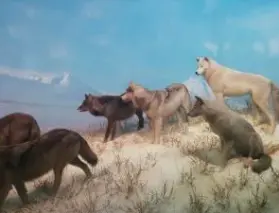I like lichens. So do many people. Descriptions of them are full of likeable achievements: their unique partnership arrangement, their preference for unpopular environments, and their huge biological success.

(nowiknow.com)
Almost certainly you’ve seen lichens—the grey or yellow growths on rocks, bark, concrete, gravestones, roofs, or any other surface that’s been exposed to the elements long enough. Lichens may look at first like rot or moss or something yucky. But what they are is a compound organism, made up of a fungus (think yeast and mushrooms; no green) and either an algae (often green) or a bacteria that carries out photosynthesis. The algae/bacteria uses light to feed the lichen. The fungus provides a protective covering and a strong attachment to a surface. (Lichens are never “feeding off” or injuring the objects they are attached to.) The lichens I’ve picked off rocks feel like dried paint.

(rosswarner.com)
A lichen is not a plant. It has no roots that suck up water. It’s not a hybrid, a genetic mix. It’s not a single organism at all. Instead, imagine a strange animal with a plant always wrapped around it, the plant making food for the two of them and the animal providing stability. A lichen is always a pair.
Lichens appeared 400 million years ago as a survival strategy for fungi. The writer Trevor Goward put it this way: “Lichens are fungi that have discovered agriculture.”
The partnership is so successful that lichens thrive in very hostile environments, including “arctic tundra, hot dry deserts, rocky coasts, and toxic slag heaps. They can even live inside solid rock, growing between the grains. Some lichens do not grow on anything, living out their lives blowing about the environment” (Wikipedia).
They are so tough that a 2005 Russian space experiment exposed lichens to the vacuum of space for 15 days, with no harm done.
Lichens come in 20,000 species. Some grow only about a millimeter a year and are useful for dating objects thousands of years old. Others, completely dependent on the air for survival, are early warning systems for air pollution. Lichens are food for reindeer and mountain goats, camouflage for insects, dyes and antibiotics for humans. They produce chemicals that kill microbes, discourage competition, control light absorption. When you live in frozen soil or humid forests or deserts, you need the right equipment.
We should be wary about projecting our human values on to other creatures, but with lichens it’s hard to resist. They appear at first to be everything that can be lowly in a plant: they are flat, small, and not beautiful in a floral way. But with a little familiarity, it’s easy to think of them in flattering terms, as innocent, innovative, and flourishing.
Written by Brock Haussamen
Subscribe to The Spiritual Naturalist Society
Learn about Membership in the Spiritual Naturalist Society
__________
The Spiritual Naturalist Society works to spread awareness of spiritual naturalism as a way of life, develop its thought and practice, and help bring together like-minded practitioners in fellowship.












